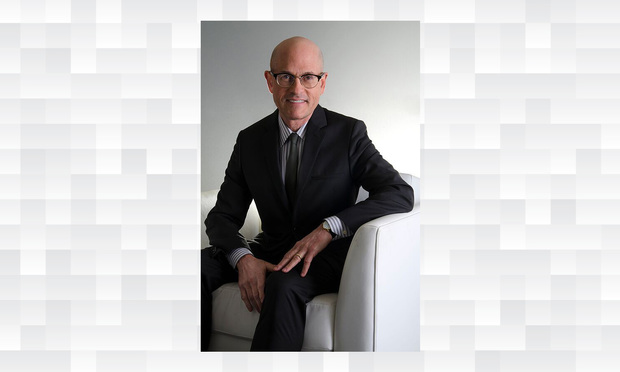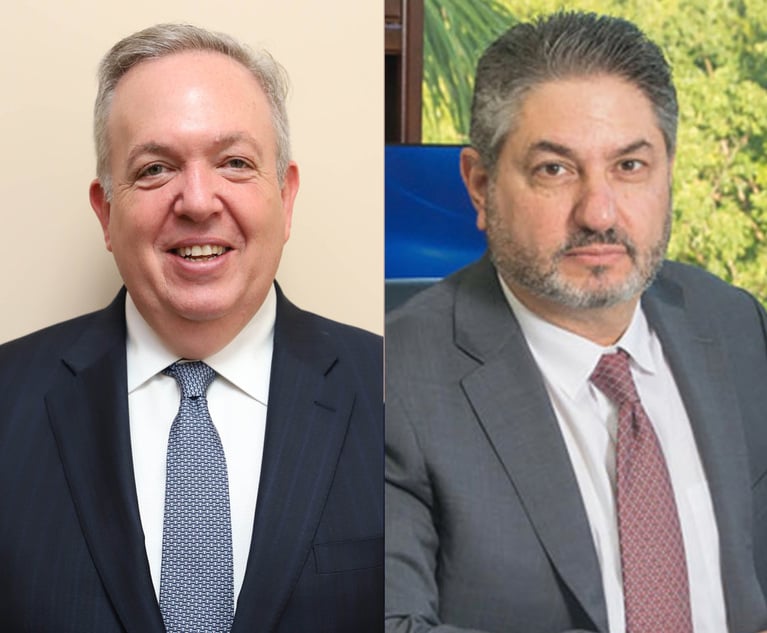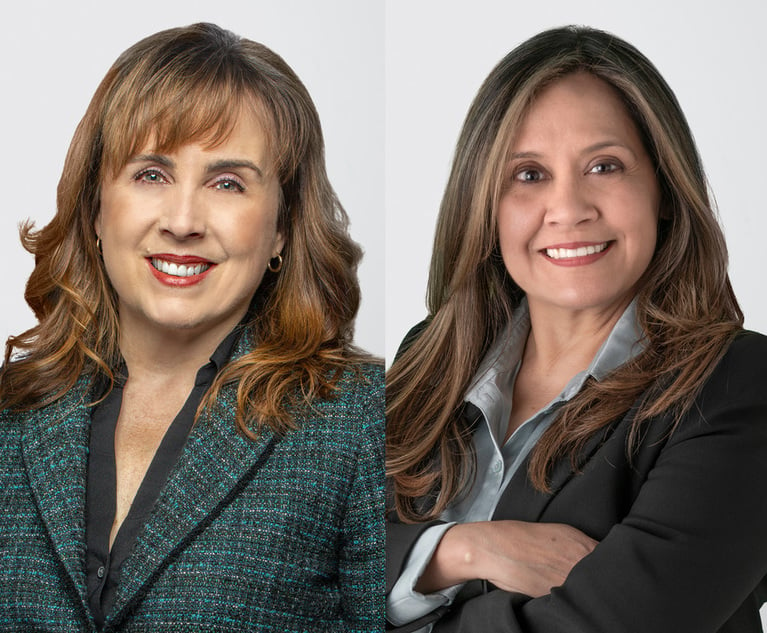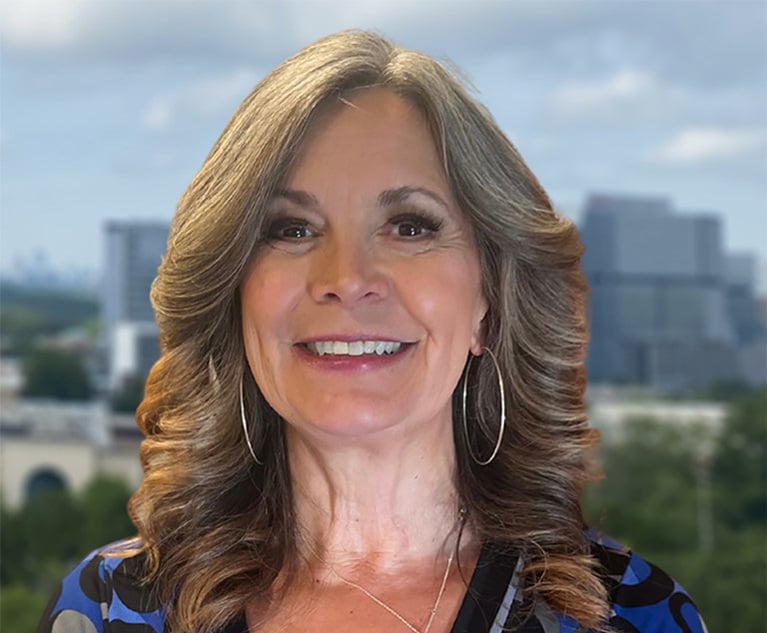Forgiveness for the Unforgiven: Small Business Chapter 11 Solution for Adverse PPP Loan Outcomes
Since the Payroll Protection Program (PPP) became law March 27, businesses who applied and obtained PPP loans, or considered applying for them, were given a roller coaster ride of uncertainty as to whether, and under what terms, the loans would be forgiven.
June 15, 2020 at 10:47 AM
5 minute read
 Thomas Lehman, Levine Kellogg Lehman Schneider.
Thomas Lehman, Levine Kellogg Lehman Schneider.Since the Payroll Protection Program (PPP) became law March 27, businesses who applied and obtained PPP loans, or considered applying for them, were given a roller coaster ride of uncertainty as to whether, and under what terms, the loans would be forgiven. First, PPP borrowers who had existing lines of credit with other lenders—not prohibited under PPP—were condemned by Congress and the Treasury Secretary and threatened with criminal investigation. Later, when it became apparent that the rigid requirements for loan forgiveness were unworkable for the businesses most in need, Congress passed legislation to loosen the requirements for PPP loan forgiveness. Still, the current political climate ensures that uncertainty over loan forgiveness will continue. For those borrowers who are denied meaningful loan forgiveness and must add short-term SBA debt to their balance sheets, there is an alternative to reduce the additional debt load: the Small Business Debtor Reorganization Act, Subchapter V to Chapter 11 of the Bankruptcy Code. Subchapter V became law last February.
It Will Be Difficult for Most Small Businesses to Meet PPP Loan Forgiveness Requirements
Businesses with 500 or fewer employees will have trouble making the PPP work for them because of the high standard the law set for the full amount of the loan to be forgiven. Under prior PPP law, businesses had to use 75% of the loan in eight weeks for employee payroll at pre-pandemic staffing levels. The June 5 amendments to the PPP law reduced the payroll requirement to 60% and extended, by 16 weeks, the time to spend the loan. Still, these and other requirements of the PPP make it difficult for small businesses to obtain complete loan forgiveness. Borrowers get only part of their PPP loan forgiven if they operate at reduced staffing levels and do not rehire or replace workers who were furloughed during the shutdown. By the time a distressed business receives the funds, its payroll, in all likelihood, will have already been reduced to keep the business alive. The forgiveness aspect of the loan won't work for businesses operating on a limited basis or not at all, or for businesses whose payroll costs are relatively low compared to inventory and supply expenses. And those businesses who received PPP loans before recent change in the PPP law will continue to be required to pay back the loan within two years. For most companies, this will mean adding a more short-term debt to their balance sheets at a time they can least afford it.
Help From the Small Business Debtor Reorganization Act
Small businesses, including sole proprietors, with debt of as much as $7.5 million are eligible for reorganization under Subchapter V of Chapter 11 if the petition is filed before March 27, 2021. Subchapter V makes it easier to get court approval of a reorganization plan by eliminating the requirement that at least one class of creditors "buy into" the plan by voting to accept it. Now, the business owner only needs the bankruptcy judge to approve the reorganization plan. Subchapter V also dropped the requirement for business owners to contribute cash or valuable property to the reorganization if the plan proposes to pay creditors only a portion of their unsecured debt. Instead, the plan must provide for the business to pay its disposable income to creditors over a three to five-year period. After the owners of the business are paid reasonable compensation for their work, the profits of the business are paid to its creditors.
How Subchapter V Can Ease the Burden of Unforgiven PPP Loans
If, at the end of its PPP journey, a borrower is told by SBA it will not qualify for a meaningful amount of PPP loan forgiveness, filing Subchapter V can be a way to "enhance" loan forgiveness. Since a PPP loan is unsecured debt, a court approved Subchapter V plan need only pay a portion of the loan to obtain a bankruptcy discharge for the debtor's business. While a business is in Subchapter V, a PPP loan lender will have little basis to block the debtor's use of the loan funds so long as the money is used to pay for payroll, employee benefits, interest on mortgage and other debt and utilities. And even if the SBA were to complain about its borrower's Chapter 11, it is doubtful the SBA would find a sympathetic ear in Bankruptcy Courts: The PPP is two months old and already, Bankruptcy judges in New Mexico and Texas have issued orders requiring the SBA to stop refusing to process PPP loan applications submitted by Chapter 11 businesses or slowing PPP loan approval.
Fewer businesses are applying for PPP loans because most business owners either realize the current rules for loan forgiveness do not fit their business or fear more election year changes to the PPP law will move the forgiveness "goal post" beyond the reach of most small businesses. Subchapter V provides an alternative for those who want to try to survive the current downturn with the help of government funding, but without adding substantial short-term SBA debt to the already difficult problems faced by businesses.
Thomas R. Lehman is a partner with Levine Kellogg Lehman Schneider + Grossman in Miami. He focuses on bankruptcy, insolvency, employment, insurance coverage and real estate disputes.
This content has been archived. It is available through our partners, LexisNexis® and Bloomberg Law.
To view this content, please continue to their sites.
Not a Lexis Subscriber?
Subscribe Now
Not a Bloomberg Law Subscriber?
Subscribe Now
NOT FOR REPRINT
© 2025 ALM Global, LLC, All Rights Reserved. Request academic re-use from www.copyright.com. All other uses, submit a request to [email protected]. For more information visit Asset & Logo Licensing.
You Might Like
View All
SEC Whistleblower Program: What to Expect Under the Trump Administration
6 minute read
Turning the Shock of a January Marital Split Into Effective Strategies for Your Well-Being
5 minute read

Trending Issues in Florida Construction Law That Attorneys Need to Be Aware Of
6 minute readTrending Stories
- 1Critical Mass With Law.com's Amanda Bronstad: 700+ Residents Near Ohio Derailment File New Suit, Is the FAA to Blame For Last Month's Air Disasters?
- 2Law Journal Column on Marital Residence Sales in Pending Divorces Puts 'Misplaced' Reliance on Two Cases
- 3A Message to the Community: Meeting the Moment in 2025
- 4Ex-Prosecutor Denies on Witness Stand That She Tried to Protect Ahmaud Arbery's Killers
- 5Latham's Lateral Hiring Picks Up Steam, With Firm Adding Simpson Practice Head, Private Equity GC
Who Got The Work
J. Brugh Lower of Gibbons has entered an appearance for industrial equipment supplier Devco Corporation in a pending trademark infringement lawsuit. The suit, accusing the defendant of selling knock-off Graco products, was filed Dec. 18 in New Jersey District Court by Rivkin Radler on behalf of Graco Inc. and Graco Minnesota. The case, assigned to U.S. District Judge Zahid N. Quraishi, is 3:24-cv-11294, Graco Inc. et al v. Devco Corporation.
Who Got The Work
Rebecca Maller-Stein and Kent A. Yalowitz of Arnold & Porter Kaye Scholer have entered their appearances for Hanaco Venture Capital and its executives, Lior Prosor and David Frankel, in a pending securities lawsuit. The action, filed on Dec. 24 in New York Southern District Court by Zell, Aron & Co. on behalf of Goldeneye Advisors, accuses the defendants of negligently and fraudulently managing the plaintiff's $1 million investment. The case, assigned to U.S. District Judge Vernon S. Broderick, is 1:24-cv-09918, Goldeneye Advisors, LLC v. Hanaco Venture Capital, Ltd. et al.
Who Got The Work
Attorneys from A&O Shearman has stepped in as defense counsel for Toronto-Dominion Bank and other defendants in a pending securities class action. The suit, filed Dec. 11 in New York Southern District Court by Bleichmar Fonti & Auld, accuses the defendants of concealing the bank's 'pervasive' deficiencies in regards to its compliance with the Bank Secrecy Act and the quality of its anti-money laundering controls. The case, assigned to U.S. District Judge Arun Subramanian, is 1:24-cv-09445, Gonzalez v. The Toronto-Dominion Bank et al.
Who Got The Work
Crown Castle International, a Pennsylvania company providing shared communications infrastructure, has turned to Luke D. Wolf of Gordon Rees Scully Mansukhani to fend off a pending breach-of-contract lawsuit. The court action, filed Nov. 25 in Michigan Eastern District Court by Hooper Hathaway PC on behalf of The Town Residences LLC, accuses Crown Castle of failing to transfer approximately $30,000 in utility payments from T-Mobile in breach of a roof-top lease and assignment agreement. The case, assigned to U.S. District Judge Susan K. Declercq, is 2:24-cv-13131, The Town Residences LLC v. T-Mobile US, Inc. et al.
Who Got The Work
Wilfred P. Coronato and Daniel M. Schwartz of McCarter & English have stepped in as defense counsel to Electrolux Home Products Inc. in a pending product liability lawsuit. The court action, filed Nov. 26 in New York Eastern District Court by Poulos Lopiccolo PC and Nagel Rice LLP on behalf of David Stern, alleges that the defendant's refrigerators’ drawers and shelving repeatedly break and fall apart within months after purchase. The case, assigned to U.S. District Judge Joan M. Azrack, is 2:24-cv-08204, Stern v. Electrolux Home Products, Inc.
Featured Firms
Law Offices of Gary Martin Hays & Associates, P.C.
(470) 294-1674
Law Offices of Mark E. Salomone
(857) 444-6468
Smith & Hassler
(713) 739-1250






